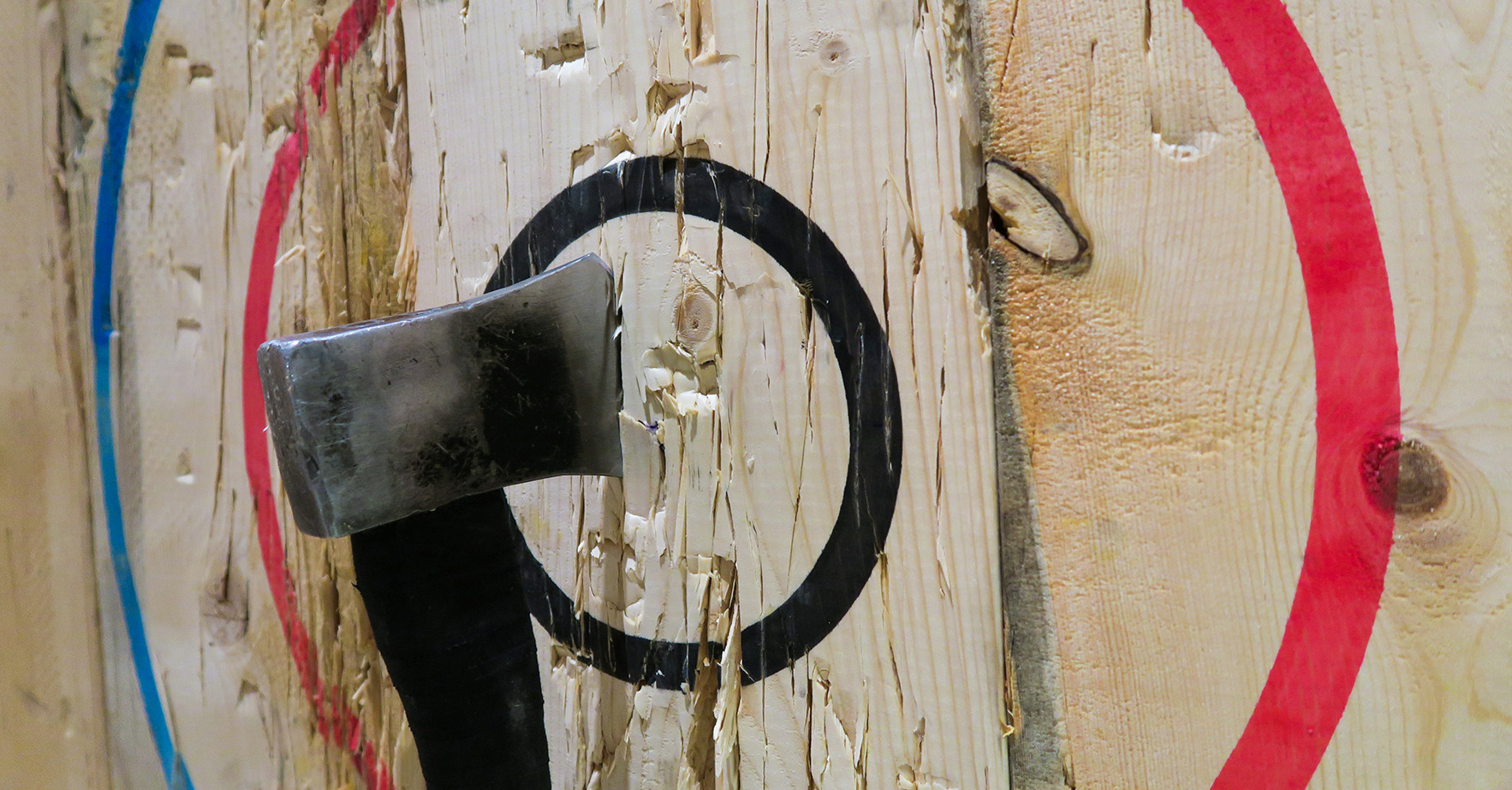Step Up Your Game with Axe Throwing Denver: Master Your Competencies Today
Step Up Your Game with Axe Throwing Denver: Master Your Competencies Today
Blog Article
The Fun of Axe Throwing: How This Sport Incorporates Ability and Adrenaline for a Great Time
Axe throwing has emerged as an astounding sporting activity that masterfully intertwines the need for precise skill with the thrill of adrenaline, offering participants a distinct and interesting experience. The act of hurling an axe in the direction of a target requires concentration and strategy, at the same time fostering an atmosphere of friendship and pleasant rivalry.
The Beginnings of Axe Throwing
Axe tossing, a recreational activity that has acquired substantial appeal in current years, traces its roots back to old times. The earliest documents of axe usage in affordable contexts are located among the Celts and Vikings, that threw axes for sport as well as in combat training.
Medieval European warriors, specifically during the Center Ages, practiced axe tossing as component of their martial training. The Francisca, a kind of throwing axe made use of by the Franks, came to be famous for its dangerous accuracy. This traditional weapon was created to be tossed at adversary shields and shield, showcasing its twin utility in both sporting activity and battle.
In even more current background, axe tossing saw a rebirth in the logging camps of North America in the 20th and 19th centuries. Lumberjacks would certainly participate in friendly competition, examining their accuracy and strength by focusing on wooden targets. This evolution from a survival skill to a recreational task has led the way for its modern-day renewal, with committed places and leagues now celebrating the sport globally.
Devices You Need
Understanding the abundant background of axe tossing enhances the recognition of the sport's contemporary iteration. For entertainment and competitive axe throwing, the most commonly utilized type is the hatchet, typically weighing between 1.25 to 2 pounds with a take care of length of about 16 inches.
Just as vital is the target. Regulation targets are created from timber, with softwood varieties like want or cottonwood being chosen for their capacity to absorb and hold the axe. The target is usually separated right into 5 concentric circles, each with a certain point value, to facilitate scoring.
Safety equipment, though frequently ignored, is essential. Protective gloves can improve grip and stop sores, while closed-toed shoes are a should to shield feet from dropped axes (axe throwing denver). Lastly, a well-lit, large tossing area, complete with safety obstacles, guarantees a regulated setting where individuals can concentrate on sharpening their abilities.
Fundamental Techniques Clarified
Understanding the fundamental methods of axe throwing is necessary for both safety and security and efficiency. The initial method to understand is the grip. Hold the axe with a company, yet kicked back hold, comparable to holding a golf club. The leading hand should be positioned straight below the axe head, while the non-dominant hand sustains completion of the handle.
Next, concentrate on the position. Stand with your feet shoulder-width apart, ensuring your body is balanced. Your leading foot should be slightly forward, aligning with your target. This positioning help in preserving security and guiding power precisely in the direction of the target.

Security First
Making certain safety and security in axe throwing is critical to producing a pleasurable and injury-free experience. A well-designed axe tossing center functions clear demarcations between throwing lanes, strong backgrounds to catch roaming axes, and non-slip flooring to avoid mishaps.
Benefits of Axe Throwing
Axe tossing deals a myriad of advantages that expand beyond basic leisure. The recurring movement of tossing the axe likewise improves hand-eye control and fine motor skills.
Psychologically, axe throwing requires precision, emphasis, and strategy, making it an excellent means to develop cognitive abilities. The concentration required to strike the target can act as a type of mindfulness, allowing individuals to remove their minds and decrease stress. This mental interaction can be particularly beneficial in helping individuals develop far better analytic abilities and mental strength.
Socially, axe throwing is commonly appreciated in team settings, fostering team-building and friendship. Whether as component of a corporate event or a casual outing with close friends, the sporting activity urges communication and partnership. In addition, the common experience of finding out and improving with each other can strengthen relationships and create enduring memories.
Conclusion

The earliest records of axe usage in affordable contexts are located amongst the Celts and Vikings, who tossed axes for sport as well as in battle training. Launch the axe when your hands are around at eye degree, enabling the axe's all-natural rotation to lead it towards the target.
A well-designed axe throwing center features clear demarcations in between tossing lanes, strong backgrounds to capture roaming axes, and non-slip flooring to prevent accidents. Participants should be instructed on the proper means to toss the axe and handle, emphasizing controlled, purposeful motions over powerful throws.
In summary, axe throwing stands out as a sport that masterfully incorporates accuracy, skill, and adrenaline.
Report this page